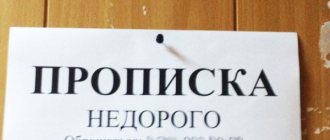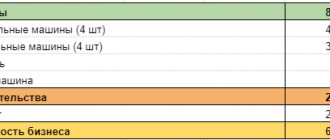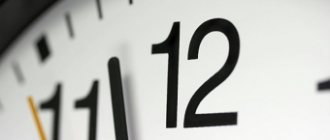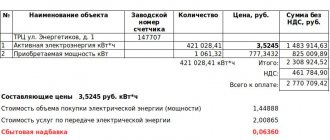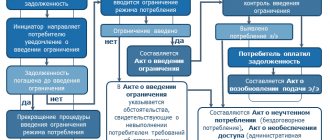The essence of multi-tariff electricity metering
Throughout the day, electricity is consumed unevenly by the population. If during the day the stations operate at full capacity, then in the evenings the load on them is minimal. As a result, during the daytime hours, when consumption peaks, all generators operate, but at night some of them stop.
Uneven operation of equipment that consumes a lot of fuel causes excessive consumption of resources. As a result, the costs of producing electrical energy are rising sharply. To reduce costs, suppliers have introduced tariffs differentiated by day zones. At night, electricity is cheaper, which encourages people to use it more actively at night, thereby shifting the maximum consumption. You can take advantage of this advantageous offer by installing a three-tariff or two-tariff meter.
What time does the night electricity tariff start from?
There are 3 options for charging electricity consumption:
- single;
- two-zone;
- three-zone.
The payment coefficient is uniform and constant; the time of day does not affect it.
If a single tariff is established, a traditional meter without differentiation is used to calculate costs. It is used only by those consumers who do not want to change equipment.
To use a two-zone tariff, you must install a two-tariff meter. The equipment will calculate the level of consumption in different time zones: from 7:00 to 23:00 the daily, more expensive tariff is valid. At 23:00 the device starts calculating costs at the night rate. When calculating payments for services, it is necessary to multiply the data from the meter by the tariff established in the region. In the utility receipt, the data is entered in 2 lines (for day and night tariffs).
The three-zone tariff works on a principle similar to the two-zone one, but the time frame is slightly different:
- the night rate is valid from 23:00 to 7:00;
- semi-peak zones include the intervals from 10:00 to 17:00 and from 21:00 to 23:00;
- Peak times are from 7:00 to 10:00 and from 17:00 to 21:00.
How to install a three-tariff meter in Moscow
If your old disk metering device is still producing kilowatts, it’s time to change it to a three-tariff electricity meter. To install a three-tariff meter in Moscow, you need to write an application to Mosenergosbyt and indicate in it your desire to install a 3-tariff metering device. In this organization, an apartment meter together with the installation service will cost 4,550 rubles; if the deadline for verification of the old accounting device has come, everything together will cost even less - 3,900 rubles.
This event is quite quick; the technician will spend less than two hours on the entire installation procedure. An additional advantage of organizing through MOSENERGOSBYT: the customer will immediately register the installed device. If you install it yourself, you will most likely have to spend much more time and money. In general, independent installation without control of the RES is prohibited.
Tariff validity period
With a two-tariff calculation method, the night tariff for electricity is applied, the time of its use is from 23:00 to 7:00. It is worth calculating how much you can save by using it.
For example, in 2021, the simple electricity tariff for the Moscow region is 4.04 rubles/kWh. If we consider a two-tariff system, then during daylight hours users pay 4.65 rubles/kWh, and during dark hours the tariff applies with a coefficient of 1.26 rubles/kWh. Despite the fact that the difference between the single and daily two-rate system is 61 kopecks. in favor of the first, the savings are obvious. Electricity consumption at night will be more than 3 times cheaper.
Savings are only possible if a person is not at home during the daytime, but can do some household chores at night. Experts have calculated that switching to a differentiated tariff is beneficial if the consumer consumes at least 500 kW monthly.
How much to pay
Electricity consumption standards at the regional level are calculated according to an established algorithm. All subjects of the Russian Federation themselves approve these indicators, depending on the economic development and characteristics of a particular place. The basis is the amount of energy resources provided over twelve months per inhabitant. The average per month is calculated by dividing the amount of costs by 120 thousand (multiplying the number of citizens by twelve months).
This indicator can change both up and down. How this number is calculated depends on:
- the number of people registered in the housing and the number of rooms;
- the presence or absence of water heating devices;
- equipment for cooking (gas or electric stove);
- location of the house or apartment (village or urban settlement);
- climate of the region;
- deterioration of the housing stock.
Based on all this, the standards for electricity consumption per person are calculated based on the following components:
- number of people living in the apartment;
- the rate of electricity consumption in a given region;
- an energy tariff that corresponds to a specific type of consumption.
As a result, all these indicators are multiplied and the price per kilowatt is obtained, which is indicated in payment receipts for electricity. The Housing Code takes into account circumstances when, with formally installed meters, electricity charges are charged at average rates for the outgoing six months:
- meters in the premises do not work or do not meet established requirements;
- data for electricity is not transferred by the resident to the resource supply company;
- the consumer does not allow the representative of the organization to visit the flow meters more than twice.
You need to understand that management organizations carefully monitor cases when residents do not have registration in the apartment and metering devices are not installed. All information about such persons is immediately sent to law enforcement agencies.
Payment for general house needs
Property owners must also pay for the maintenance of common areas. In this case, the norms of electricity consumption per person are calculated based on the readings of general house flow meters and the presence of metering devices in the apartment or house. The consumption of provided energy resources in a building in which individual meters are installed is calculated as follows:
- for premises with individual flow meters - add up the indicators of the metering device in the apartment and the costs of general house needs in the amount of 7 kW/h for each person per month;
- to calculate electricity without a meter - sum up the number of kW/h calculated according to the standard and the indicator of unallocated kilowatts in proportion to the square footage of the living space.
To motivate people to switch to calculations using flow meters, every six months the norms of electricity consumption per person will increase by 15-20 percent. In this way, electricity tariffs will increase along with the annual planned increase in utility prices. All this will hit the pockets of users, so it will be expensive to pay for light at the average tariff when there is no electric meter. It is more profitable to install a flow meter, and in a few months its purchase will fully pay for itself.
Temporary peak zones
By tracking daily dynamics, you can identify several temporary peak zones, or rush hours.
- The morning peak occurs between 7:00 and 10:00.
- After the morning peak comes the first half-peak. This day zone includes the hours from 10:00 to 17:00. There is a load on the network, but it is not too great.
- The evening peak starts at 17:00 and ends at 21:00.
- The duration of the second half-peak zone is from 21:00 to 23:00.
The night zone is not considered a peak zone, since from 23:00 to 7:00 costs are minimal. To save on utility bills, you should install a special meter and try to use powerful appliances at night. On a two-tariff meter, day and night (evening) are designated as T1 and T2. The first period starts at 7:00, the second at 23:00. Peak hours are taken into account when using three-tariff meters.
Day-night tariff
The two-phase method of calculating electricity is otherwise called the day-night tariff. It operates in many regions of our country, but tariffs for the population vary. The differentiated regime is especially popular in the capital. It is beneficial to people who:
- actively use powerful electrical appliances, such as bread makers, boilers, dishwashers;
- equipped their apartments with warm floors or a convection heating system;
- have large country houses with an extensive lighting system, well or sewage pump, etc.
Tips for thrifty owners
Consumers who use electricity a lot can be advised to consider switching to two- or three-tariff devices. And also use household appliances at night, for example, run a washing machine or dishwasher at night, charge cell phones and other equipment. It would be more rational for owners of three-tariff meters to learn the tariffs, time phases and avoid peak hours. This approach will help to significantly reduce energy costs.
Advantages of night tariff for electricity
The advantages of the preferential tariff are obvious:
- Electricity consumers can achieve good cash savings. To do this, you need to adjust your regime, reducing daytime, but increasing nighttime electricity consumption.
- Suppliers are able to reduce the load on equipment, resulting in less wear and tear and fewer breakdowns. This allows you to save budget funds.
- Evenly distributed load on electrical grids is a good way to save the fuel needed to produce energy.
- Due to the absence of overloads, the amount of emissions of harmful substances into the atmosphere is reduced.
- Modern metering devices are equipped with built-in memory modules. They allow you to save meter readings even if there is a power outage.
However, users should note that different cities have different preferential rates. Before switching to a differential system, experts recommend making calculations and finding out how profitable such a solution is. If only the refrigerator operates in the house at night, the consumer should think about the need for a two-tariff system. Before the transition, you should calculate how long it will take to pay off the costs of new equipment and electrician services.
Cost of equipment
The amount you will have to pay for installing a new device includes several cost items:
- The cost of the equipment itself. Prices range from 5,000 to 15,000 rubles. Even if the budget is limited, it is advisable to choose not the cheapest samples, but focus on the average price category.
- Payment for installation. The regional power grid will charge approximately 3,500 rubles for installation of equipment.
- Associated costs for servicing the device. Even with proper operation, you will have to allocate funds for:
- primary programming, which is carried out only by specialists;
- calling the team again to make adjustments to the program in case of changes in light tariffs;
- mandatory periodic verifications;
- replacing the batteries that power the device's memory. It is impossible to do this on your own; you will need the help of specialists.
Disadvantages of the night tariff
The differential tariff has not only advantages. The multi-tariff system also has several disadvantages:
- With the increase in nighttime electricity consumption, users have to monitor the operation of home appliances in the dark. As a result, a person’s daily sleep and wakefulness patterns are disrupted, which is fraught with health problems.
- If devices are left to operate unattended, there is a high risk of fire or flooding.
- Noisy household appliances, such as a washing machine, can prevent neighbors or family members from getting a good night's sleep.
Another disadvantage is the initial cost of installing a new meter. However, when using a two-tariff meter, the savings are so great that they will pay for themselves in the first year.
Pros and cons of using
We have already figured out how the accrual system works in a three-zone counter. Now let's look at what positive and negative sides it has.
The advantages include:
- cost savings when used during non-peak hours;
- legality of use, which does not include fines, shutdowns and other troubles that may arise when using prohibited methods of saving;
- saving the readings on the meter display for the entire period of use. Nothing bad will happen even if the receipt is missing.
In addition to the positive qualities, like any device, there are also disadvantages:
- not all people are accustomed to using household appliances at night;
- there is a risk that after installing such an expensive device, the electricity supplier company will revise its tariffs over time and make your purchase unprofitable;
- Costs increase greatly during peak hours, and many people have a direct need to use energy at this time, which can make its payback a very long process.
You may also be interested in an article about which electric meters are best for an apartment. Read an informative article about electronic electricity meters here.
